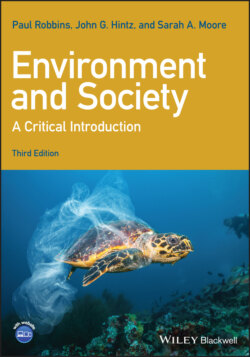Читать книгу Environment and Society - Paul Robbins - Страница 31
Limits to Population: An Effect Rather than a Cause?
ОглавлениеBeyond this, recent trends in population have made some of the pronouncements and assumptions of population-centered thinking moot. Specifically, the rate of population growth around the world has fallen precipitously in the past few years. Some areas are indeed experiencing negative growth. This should be encouraging for Malthusians. But more profoundly, it raises a basic question about population: Is population a social driver of environmental change or is it actually the product or outcome of social and environmental circumstances and conditions?
Consider the following: Population growth rates, which measure (as a percentage) the rate of natural increase of the total number of people on the Earth, peaked in the period between 1960 and 1970 (Figure 2.3). In the period since, they have only declined, slowly approaching a rate below 1%, nearing a state of zero population growth (ZPG). Whatever one might think about the danger that population (versus affluence, for example) presents for the environment, one must wonder what causes such a change.
Figure 2.3 Global population growth rates. Population growth rates peaked in the 1960s and have steadily and continuously declined since then.
Zero Population Growth A condition in a population where the number of births matches the number of deaths and therefore there is no net increase; an idealized condition for those concerned about overpopulation
What makes population growth decline? What are the implications for human–environment relations in a world where population, while continuing to grow, is likely to reach stability in the next 50 years?
